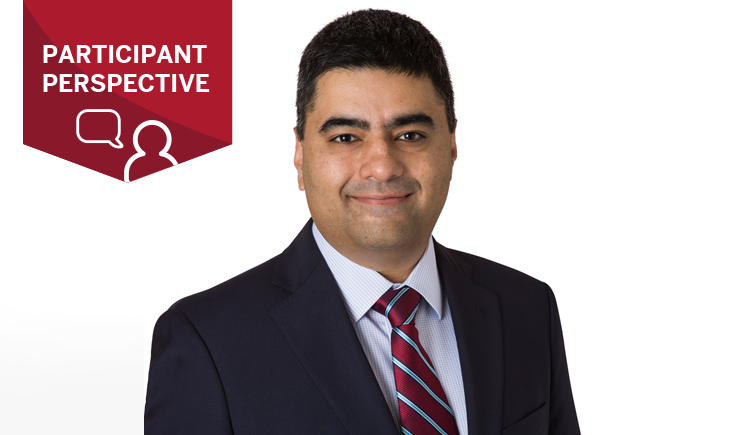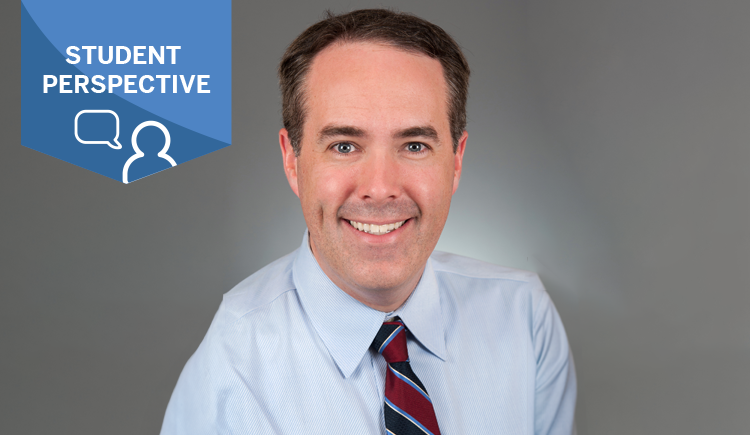
Information regarding COVID-19 has rapidly evolved. The content in this article provides a historical snapshot of events surrounding the date of posting.
One of the many lessons learned during the COVID-19 pandemic is the need for people in health care leadership roles to apply adaptive leadership principles to solve novel problems, according to Ashraf Hegazy, a leadership instructor and consultant who shares his expertise through Harvard Medical School’s postgraduate medical education program, Safety, Quality, Informatics, and Leadership.
Hegazy explains that most health care authority figures are up to speed at solving some of the more technical problems they face on a regular basis, and which have a recognized resolution to implement. But adaptive problems are unique situations that have not been seen before; as a result, no roadmap exists to help people address them effectively. There are no authorities with the expertise required to solve adaptive challenges. Therefore, people who are exercising leadership in addressing such challenges must learn new ways of thinking and acting in order to fully meet the challenges.
Adaptive Challenges in COVID-19
He points out that most problems contain a mixture of both technical and adaptive problems, so they need to be solved using a variety of different approaches. In fact, the COVID-19 pandemic illustrates particularly well how both technical and adaptive components can co-exist and require a multi-faceted strategy to address its full gamut of challenges.
“When COVID-19 struck, we needed to figure out the virus’s DNA, and the mechanisms involved in its invasion of our bodies, analyze the relevant pathways, etcetera. We also needed experts to figure out how to take that knowledge and create a vaccine to battle the virus,” Hegazy says. The expertise to address the technical challenges already existed, but there were also significant adaptive challenges to consider, such as the impact that occurred when some states shut down to try to contain the spread of the virus and thus threatened many people’s incomes, putting them at risk for serious financial consequences. This required creating new ways to address this previously unencountered economic crisis.
“In the United States, the loss of work caused as many as one in five households to be at risk of losing their homes,” he says. This required figuring out how to provide cash to help people pay expenses, how to work with landlords to avoid their evicting tenants, and how to help those landlords when they weren’t collecting rent.
“The question became: how do you mobilize people to engage collectively in addressing the problem? This required a significantly different approach than the traditional perspectives of leadership,” Hegazy says.
Embracing an Adaptive Framework
To respond to these types of challenges, stakeholders need to adopt a new type of framework that puts the responsibility of the solution into the hands of the people who are ultimately impacted. “This requires you to challenge everything you have been told and your expectations about senior people since, in adaptive challenges, they don’t hold the answers,” he says. Instead, the power comes from working in representative groups to address the problem.
Having a minimal amount of disequilibrium, or distress, in the system is also a requirement for adaptive work to occur.
Going Outside the Limit of Tolerance
“When we are in our comfort zone, no learning happens. We only start engaging with adaptive change if the disequilibrium level is higher than our comfort zone,” Hegazy says. On the other hand, when the level of distress gets too high, no adaptive work happens since people can’t tolerate the distress.
“With the COVID-19 pandemic, the distress became higher than our comfort level, which opened the window to start doing adaptive work. But over time, as economic problems began exploding, it began entering the danger zone. Once things got to this point, people stopped doing adaptive work and simply tried to get back to their comfort level without having to accept any more change or personal losses,” he says. “This is when destructive ideas take place, such as the myth that COVID is no worse than a cold or that any government intervention is an authoritarian overreach. Such avoidance mechanisms then hinder society’s capacity to fully address the challenge,” he adds.
When Adaptive Leadership Is Absent
“This is the time when conspiracy theories start to take hold,” Hegazy notes. “Authority figures can promise solutions and tell people they are not at fault. They will say: ‘Believe me and give me power and I will solve the problem for you.’ That’s what people want to hear. You give the power, and in many cases, the authority figure may manage to hide parts of the problem to convince people it has gone away. The problem continues festering but people are comfortable.” The danger, though, is that the problem continues to worsen anyway.
“One stakeholder group gets blamed and they have to take on most of the losses. Ultimately, a large group of people may lose their homes. Others will blame those people for causing their problem because they didn’t manage their finances, or didn’t work two or three jobs.”
Hegazy adds that this isn’t leadership or adaptive work, but rather, dysfunction that could be avoided with proper preparation and interventions.
That makes it essential that people in authority positions make an effort to work with other stakeholders to develop productive responses that follow an adaptive framework. While adaptive work is almost always difficult, with perseverance, Hegazy says it also can lead to better outcomes for everyone, making it well worth the effort.
Written by Lisa D. Ellis


